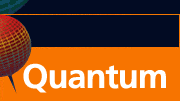CONTACTS
- Coordinator
Adolfo del Campo
-
Quantum Lunch Location:
T-Division Conference Room, TA-3,
Building 123, Room 121
 |


Quantum Institute: Visitor Schedule
The Quantum Lunch is regularly held on Thursdays in the Theoretical Division Conference Room, TA-3, Building 123, Room 121.
The organizing committee includes Malcolm Boshier (P-21), Adolfo del Campo (T-4 & CNLS), Michael Di Rosa (C-PCS), Armin Rahmanisisan (T-4 & CNLS), Changhyun Ryu (P-21) , Nikolai Sinitsyn (T-4), Rolando Somma (T-4), Christopher Ticknor (T-1), and Wojciech Zurek (T-4).
For more information, or to nominate a speaker, contact Adolfo del Campo.
To add your name to the Quantum Lunch email list, contact Ellie Vigil.
Thursday February 27, 2014
12:30 PM - 2:00 PM
Speaker: Vyacheslav Lebedev (UCSB)
Technical Host: Malcolm Boshier
TOPIC: Quantum simulator with a tuneable degree of chaos
Abstract
In this talk I will briefly describe my previous and current research in experimental cold atom physics and in the remainder of this talk I will focus on the proposal to build a quantum simulator with a tuneable degree of chaos.
Understanding and engineering quantum many-body systems for quantum simulation purposes is currently one of the most important challenges in physics. Ultracold atoms can be controlled and manipulated to emulate quantum effects that originally take place in much less accessible regimes. Such devices have been termed "Quantum Simulators". I will describe a concrete and theoretically verified method which utilises recent advances in the field of ultra-cold atomic physics to build a quantum simulator which can be tuned between chaos and integrability. This novel idea can be realised by tuning many-body interactions, while leaving all other parameters of the system unchanged. Such independent control of the degree of chaos, will result in a unique tool, which will facilitate an entirely new generation of experiments.
The crucial point which makes this approach unique is that the integrability can be varied as an independent parameter, thus providing us with the new axis (degree of chaos) against which any 1D physics effect can be studied. Upon entering this new dimension and calibrating this new axis, we will be in a unique position to apply this new 'device' to a variety of topics, e.g. engineering non-thermalizable states of matter, better understanding of decoherence mechanisms, matter-wave interferometry, cold atom SQUIDs, etc.
|


